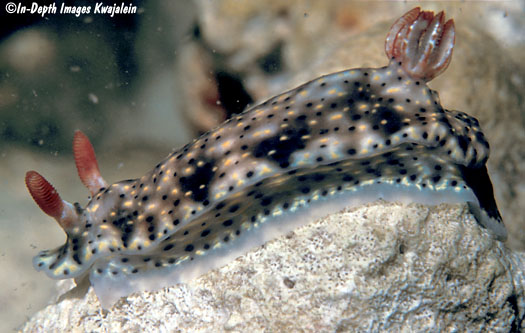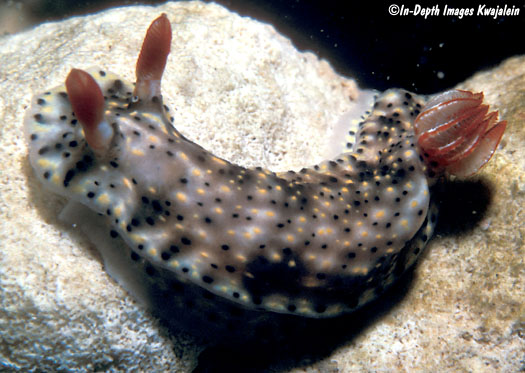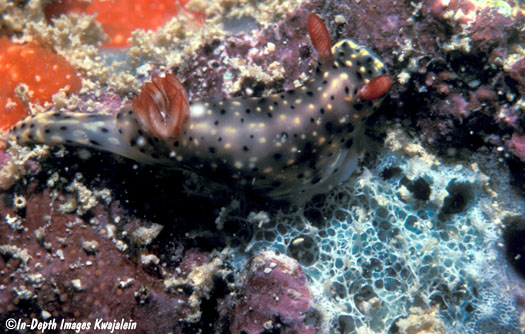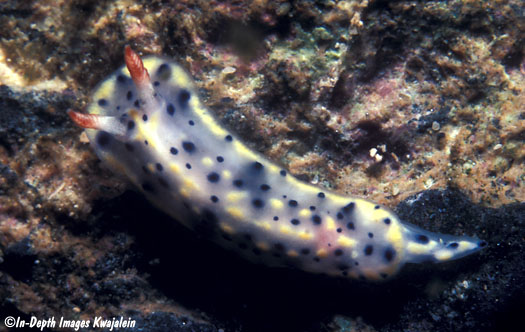
This species appeared to be relatively common in Hawaii, but only in areas that were hard to get to. Starting in October 1977, I would find these any time I was able to get to Fort Kam Reef, an intertidal and shallow subtidal reef just outside the eastern side of the mouth of Pearl Harbor on Oahu. The difficulty was that this was on an army base (Fort Kamehameha), and to get to it you had to get onto the base through the Air Force gates at Hickam. It wasn't easy for mere civilians to get there, so I would have to tag along when a friend who had access to the base wanted to go. At Kam reef, I found about 16 specimens under and on rocks in the shallow channel leading into the harbor. It was not unusual to pop your head above the surface and watch surfaced submarines or other Naval craft cruising past. Some years later, I found an additional four specimens in a similar habitat in the channel leading into Honolulu Harbor. But the big population was in one of the small side branches within Pearl Harbor itself. On the western side of Pearl Harbor's mouth is a Naval family housing area. Entirely within this housing area is a long narrow arm of Pearl Harbor that looks almost like a canal. It is called Iriquois Channel and isn't especially wide or deep, and the water is not too clear. A fish collecting friend of mine, who shall remain nameless on the chance that the statute of limitations has not yet expired, used to sneak in here from time to time, towing his boat right onto the base (there were no guards at the gate at the time, but all vehicles in the area had to have a proper sticker). He'd launch the boat at a small park near the mouth of this channel and collect feather duster worms for the aquarium trade. He had noticed a few nudibranchs around and on 13 March 1982 took me along on one of his surreptitious expeditions. Yes, there were nudibranchs. I found four species, including two specimens of Caloria indica, five Carminodoris cf flammea, and an uncountable number of both Dendrodoris fumata and Hypselodoris infucata. Those little guys were all over the place! Alas, that was the only time I was able to get in there, so this interesting population of nudibranchs remains mostly unstudied.
Sea Slugs of Hawaii notes that these are also locally common on some muddy and silty reef flats of Kaneohe Bay, Oahu.


Hypselodoris infucata feeds exclusively on the turquoise sponge Dysidea fragilis, shown below.

Here is a young specimen.

Created 20 April 2009